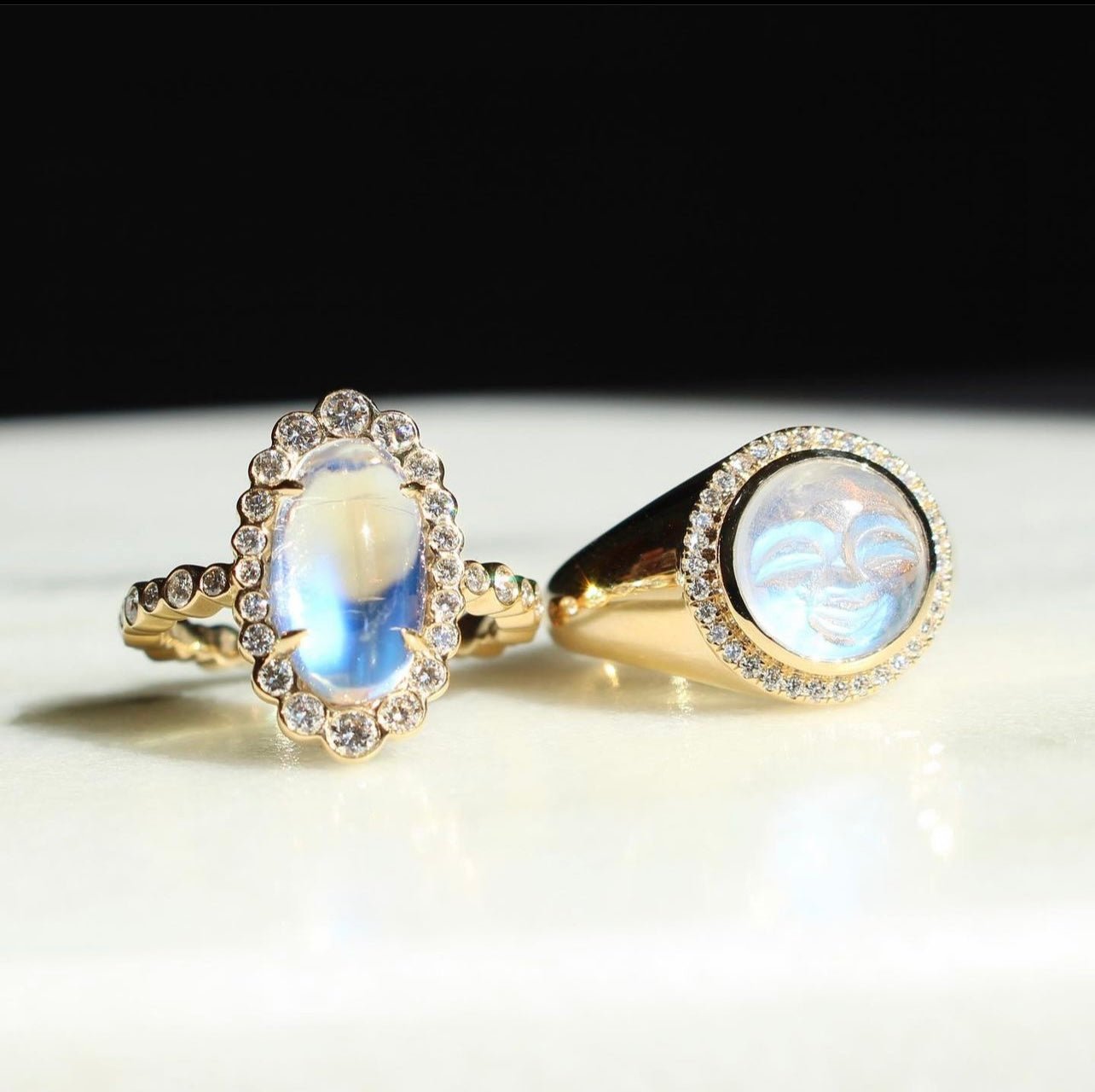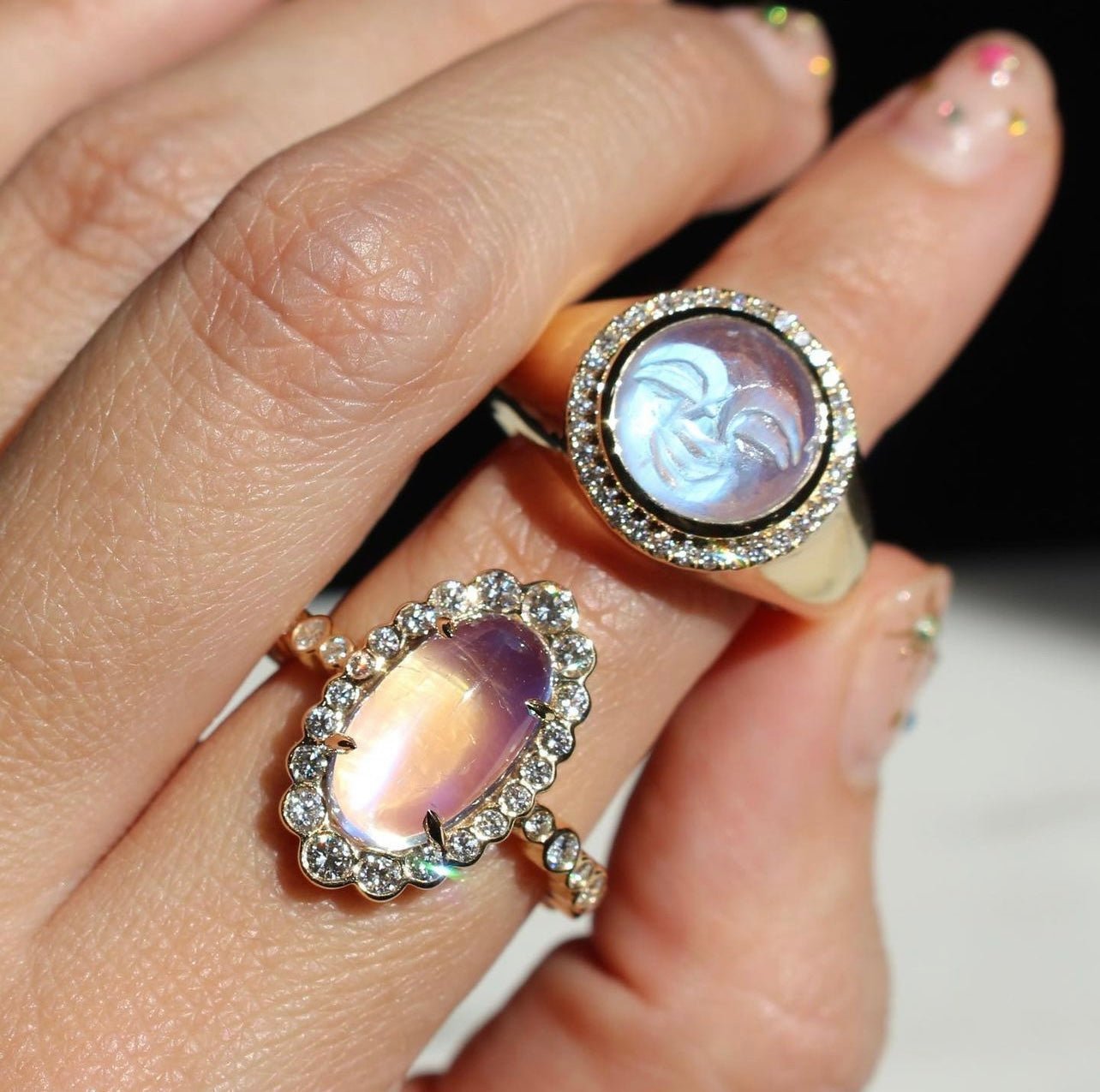If you’re searching for ruby or garnet alternatives, you’ve come to the right place. Red spinel is a fantastic opportunity for red gem lovers because it combines the best of both worlds regarding quality and appearance.
At Mark Henry Jewelry, we describe ourselves as champions of exotic and fine gems, which means that we only offer the best selections. Our support for red spinel is a testament to its excellent grade.
Red spinel can sometimes be mistaken for its red-gem siblings due to its vibrant shades. Despite not being an identical match, it still carries all of the lore and legacy that red gems inherit. Before our modern scientific advances, red spinel was often lumped in with rubies because it was difficult for gemologists and jewelers to tell the two stones apart.
Did you know that the Imperial Crown, which dons the head of the British Royal Family (yes, Queen Elizabeth II!), contains a dazzling red spinel at its helm? For years, it was thought that the gem was a precious ruby, but we know now that is incorrect. Does it change the beauty and extravagance of the piece? Absolutely not.
Allow us to immerse you in the world of spinel and take you through the delicate history of red spinel’s rise to glory. We assure you, this tale is anything but boring.
Where Does the Red Spinel Come From?
Red spinel is best known for its association with Badashkan. This area is in modern-day Afghanistan (the first spinel was found near Kabul in this nation around 100 BCE), but originally had land that spread into parts of China and Tajikistan. Here is where red spinel was first discovered and became popular, quickly becoming a favorite of royalty and commoners alike.
As we mentioned before, it was first believed that red spinel was simply a form of a ruby. And this was not too far of a stretch — rubies and red spinel form in the same mines. However, there is so much more to this gem than what meets the eye.
Is Spinel a Mineral?
Spinel is a mineral within the Spinel mineral group amongst chromite and franklinite. It can have isometric, hexoctahedral, or dodecahedron crystallography. It is chemically titled “magnesium aluminate.”
One can plan to find spinel in crystalline limestone, crystalline serpentine, or crystalline gneisses. The banks of water sources are typically where spinel likes to stay in the form of pebbles.
What Does Spinel Look Like?
Spinel has a glassy luster and no cleavage, although it can fracture in a conchoidal way. It can be anywhere from completely see-through to opaque, which gives it a bit of range. Obvious clarity is always a means of value, but this has more to do with inclusions. It has a specific gravity somewhere between 3.58 and 3.61.
In terms of appearance, spinel can be a variety of colors. We are focusing on red spinel today, but it also comes in offshoots of warm tones like pink and violet and cool tones like blue, green, and black. Rarely can you find colorless spinels, but their fans are out there.
Where Can You Find Red Spinels?
Spinel is interesting due to its globe-trotting nature. If you’re only searching for spinel that is not red, you can find United States sources in New York, California, and New Jersey!
Other popular areas for spinel mining include Burma in Myanmar, Ontario, Quebec, Bavaria, Germany, the Campania region of Italy, all across Madagascar, Tajikistan, and Russia. Once again, the best place to look in these areas is nestled in the banks of streams and rivers.
The Ruby Principle: Where Does the Red Hue Come From?
So, how exactly do spinels become red? It has to do with the amount of chromium that they contain. Chromium is the main factor in the red hue of rubies as well, but this does not mean they are identical. In fact, rubies are a part of the corundum family.
They get their coloring from the iron, vanadium, titanium, and most importantly, the chromium that exists with their aluminum oxide crystalline.
How Are Rubies and Red Spinels Different?
While it has been difficult to tell rubies from red spinel throughout history, there are some tried and true ways to separate the two gems — hardness and carat/color.
First, consider their hardness. Rubies fall at a 9 on the Mohs scale of hardness, making them incredibly durable. They are only secondary to the hardness of diamonds! Red spinel is quite wearable as well at a 7.5-8 on the scale but isn’t quite as sturdy as rubies.
Size is another distinguishing factor between rubies and red spinel. You can easily find a spinel that is quite large in carat weight and overall shape. However, rubies with exceptional clarity and color tend to be no bigger than 3 carats.
Even poor-quality rubies are hardly ever over 100 carats. So if you are looking at a particularly large piece of “gem-grade” ruby that exceeds 10 or so carats, it is more likely you are actually observing a fine piece of red spinel.
The Red Spinel Throughout History
This common mix-up between red spinel and rubies bled into historical moments, as well. Not just every-day-jewelers were fumbling the different stones. Even monarchs and the best gemologists were perplexed by what kind of gem had tumbled onto their desks.
The Black Prince’s “Ruby”
Remember the Imperial State Crown we mentioned earlier? The red spinel that adorns it is affectionately termed the Black Prince’s Ruby even though it is no such thing. The Black Prince’s Ruby sits surrounded by gorgeous diamonds, sapphires, emeralds, pearls, and gold pieces.
It is no surprise that the 170 carat Black Prince’s Ruby is red spinel. For one, think about its size — rubies of excellent grade are never more than 3 carats. A 170 carat ruby of that clarity and hue would be impossible to acquire.
Additionally, the piece came into possession by the British Royal Family in 1367, long before the two gems were seen as separate entities. Without magnification or means to formally test hardness like the Mohs Scale, there would be no way to tell apart rubies from red spinel. Therefore, the gem would naturally be dubbed a ruby because of its shading.
Catherine the Great’s “Ruby”
A similar fate was set for the Ruby of Catherine the Great. It was placed into her own Imperial Crown used for her 1762 coronation but is made of red spinel. The crown, a conglomerate of diamonds and pearls, features the spinel prominently in the front in the shape of a cross. It was sold to Russian royalty by the Emperor Koh Khan of China in 1676.
The spinel was found in Asia, where most of the spinel group is derived. It was discovered prior to important gemological advancements in certification and categorization, and it was used merely for its red color. Red spinel seems to be the master of trickery.
What Is the Value of Red Spinel?
If anything, the use of red spinel in place of rubies proves how incredible its quality is. It is just as beautiful as one of the “big three” stones (emeralds, rubies, and diamonds). In terms of pricing, red spinel is an excellent affordable alternative to rubies. Along the same lines, pink spinel is also typically cheaper than pink sapphire.
None of this reflects that spinel has a lower overall value or is any less beautiful to look at. The way that spinel has barreled through the jewelry market has actually placed it at the top of the pile, making it just as desired as rubies or the like.
The Mark Henry Red Spinel Halo Ring
At Mark Henry Jewelry, we offer a wide range of red spinel pieces. One of our favorites is the Solitaire Red Spinel Halo Ring, with a 1.20 ct red spinel surrounded by 0.31 ct of petite round diamonds and white diamonds on the band itself. It is versatile enough to dress up or down.
Make a statement with our Spinel Halo Stud Earrings. This pair contains 0.88ct of red spinel and 0.19ct of petite diamonds. They elevate your jewelry box in a subtle and classy way.
Of course, we can’t forget our Three Stone Tapered Baguette Red Spinel Ring. It is a highly sought format, with 0.78ct red spinel resting right at the center of two tapered baguette diamonds totaling 0.27ct. The red spinel is on full display with this piece.
What it's Worth
Whether you prefer rubies or red spinel, red gems are gorgeous symbols of love, intense emotion, and protection. You may find that red spinel is perfect for gifting a partner on Valentine’s Day or an excellent addition to any winter holiday outfit. One thing about red spinel is for sure: It brings out the inner beauty and the inner shine glimmering within anyone who wears it.
Sources:


